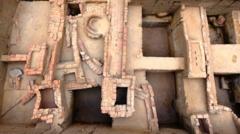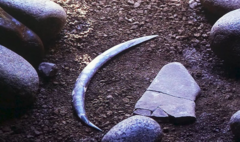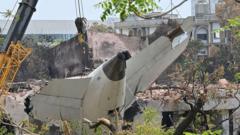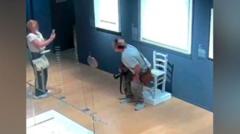Experts express concern over the neglect of an invaluable archaeological find in Vadnagar.
Ancient Indian Skeleton Remains in Limbo Due to Bureaucratic Delays
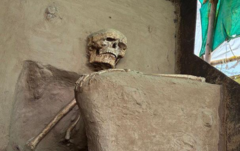
Ancient Indian Skeleton Remains in Limbo Due to Bureaucratic Delays
A 1,000-year-old skeleton entangled in red tape still awaits a permanent display six years after its discovery.
The fate of a remarkable 1,000-year-old skeleton, discovered in a seated cross-legged position in Vadnagar, India, is mired in bureaucratic delays six years after its unearthing. Archaeologist Abhijit Ambekar unearthed the skeleton in 2019, noticing the top of a skull while excavating in western Gujarat. Following the discovery, his team excavated the well-preserved remains found in a pit, echoing experiences of meditative posture indicative of samadhi burials unique to Hindu customs. This significant find, akin to a few others across the nation, has still not secured a permanent home in any museum due to ongoing disputes over the custody of the skeleton.
Despite being an exceptional attraction to the town, the skeleton remains haphazardly stored in a makeshift shelter near a recently inaugurated Archaeological Experiential Museum. This $35 million facility, which showcases 2,500 years of history and over 5,000 artifacts, neglects to include the skeleton among its exhibits, raising concerns for locals who question the treatment of this valuable artefact. Ambekar insists the skeleton holds immense potential for understanding the past, representing not only Vadnagar’s rich history but also contributing to broader insights into the lives of ancient inhabitants.
Bureaucratic obstacles have led to mixed messages between the Archaeological Survey of India (ASI) and Gujarat state officials regarding the skeleton's custody. While around 9,000 artifacts excavated from Vadnagar have been allocated to local museums, the skeleton remains in limbo, caught in a web of red tape. Local officials are reportedly working on moving the skeleton to an appropriate facility, but tension remains as the ASI has not yet transferred custody.
Experts involved in the excavation and analysis stress the need for urgent action. The skeleton’s survival is attributed to the specific soil conditions that have preserved its integrity, but current storage conditions pose significant risks for its degradation. Observing the skeleton has become a somewhat morbid curiosity for many residents, which they believe could represent a unique tourist opportunity for Vadnagar and further enhance the city's historical significance. As calls grow for its protection and preservation, the hope remains that the ancient skeleton will soon find a worthy home for public education and appreciation.
Despite being an exceptional attraction to the town, the skeleton remains haphazardly stored in a makeshift shelter near a recently inaugurated Archaeological Experiential Museum. This $35 million facility, which showcases 2,500 years of history and over 5,000 artifacts, neglects to include the skeleton among its exhibits, raising concerns for locals who question the treatment of this valuable artefact. Ambekar insists the skeleton holds immense potential for understanding the past, representing not only Vadnagar’s rich history but also contributing to broader insights into the lives of ancient inhabitants.
Bureaucratic obstacles have led to mixed messages between the Archaeological Survey of India (ASI) and Gujarat state officials regarding the skeleton's custody. While around 9,000 artifacts excavated from Vadnagar have been allocated to local museums, the skeleton remains in limbo, caught in a web of red tape. Local officials are reportedly working on moving the skeleton to an appropriate facility, but tension remains as the ASI has not yet transferred custody.
Experts involved in the excavation and analysis stress the need for urgent action. The skeleton’s survival is attributed to the specific soil conditions that have preserved its integrity, but current storage conditions pose significant risks for its degradation. Observing the skeleton has become a somewhat morbid curiosity for many residents, which they believe could represent a unique tourist opportunity for Vadnagar and further enhance the city's historical significance. As calls grow for its protection and preservation, the hope remains that the ancient skeleton will soon find a worthy home for public education and appreciation.

